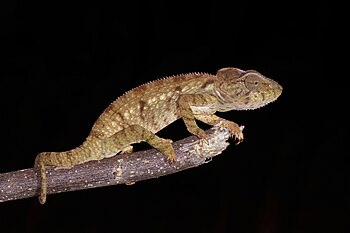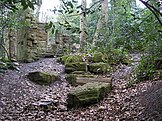Wikipedia:Main Page history/2021 February 26b
From today's featured article The marsh rice rat (O. palustris), a similar species to O. gorgasi Oryzomys gorgasi, also known as Gorgas's rice rat, is a rodent in the genus Oryzomys of the family Cricetidae. First collected as a living animal in 1967, it is known from only a few localities, including a freshwater swamp in the lowlands of northwestern Colombia and a mangrove islet in northwestern Venezuela. An extinct form from the island of Curaçao off Venezuela has been described as a separate species, O. curasoae, but does not differ morphologically from mainland populations. It is a medium-sized, brownish species with large, semiaquatically specialized feet. It differs from other Oryzomys species in several features of its skull. Its diet includes crustaceans, insects, and plant material. The species is listed as "Endangered" by the IUCN due to destruction of its habitat and competition with the introduced black rat. (This article is part of a featured topic: Oryzomys.)
Recently featured:
Did you know ...
|
In the news
On this dayFebruary 26: Purim (Judaism, 2021)
More anniversaries:
|
From today's featured list
London Wildlife Trust, founded in 1981, is the local nature conservation charity for Greater London. It is one of 46 members of the Royal Society of Wildlife Trusts (known as The Wildlife Trusts), each of which is a local nature-conservation charity for its area. The trust aims to protect London's wildlife and wild spaces, and it manages over 40 nature reserves in Greater London. The trust's oldest reserves include Sydenham Hill Wood (pictured), which was managed by Southwark Wildlife Group before 1982 and was thus already a trust reserve at that date. The campaign to save Gunnersbury Triangle began that same year, succeeding in 1983 when a public inquiry ruled that the site could not be developed because of its value for nature. The trust has some 50 members of staff and 500 volunteers who work together on activities such as water management, chalk grassland restoration, helping people with special needs, and giving children an opportunity to go pond-dipping. (Full list...)
Today's featured picture

|
The Malagasy giant chameleon (Furcifer oustaleti) is a large species of chameleon, endemic to Madagascar. As well as the insects and small vertebrates on which the species feeds, it sometimes consumes fruit. It has been observed drawing fruit-bearing twigs closer with its forelimbs, a degree of food manipulation unusual in reptiles. This juvenile Malagasy giant chameleon was photographed at night in Montagne d'Ambre National Park. Photograph credit: Charles James Sharp
Recently featured:
|
Other areas of Wikipedia
- Community portal – Bulletin board, projects, resources and activities covering a wide range of Wikipedia areas.
- Help desk – Ask questions about using Wikipedia.
- Local embassy – For Wikipedia-related communication in languages other than English.
- Reference desk – Serving as virtual librarians, Wikipedia volunteers tackle your questions on a wide range of subjects.
- Site news – Announcements, updates, articles and press releases on Wikipedia and the Wikimedia Foundation.
- Village pump – For discussions about Wikipedia itself, including areas for technical issues and policies.
Wikipedia's sister projects
Wikipedia is hosted by the Wikimedia Foundation, a non-profit organization that also hosts a range of other projects:
-
Commons
Free media repository -
MediaWiki
Wiki software development -
Meta-Wiki
Wikimedia project coordination -
Wikibooks
Free textbooks and manuals -
Wikidata
Free knowledge base -
Wikinews
Free-content news -
Wikiquote
Collection of quotations -
Wikisource
Free-content library -
Wikispecies
Directory of species -
Wikiversity
Free learning tools -
Wikivoyage
Free travel guide -
Wiktionary
Dictionary and thesaurus
Wikipedia languages
This Wikipedia is written in English. Many other Wikipedias are available; some of the largest are listed below.
-
1,000,000+ articles
-
250,000+ articles
-
50,000+ articles




